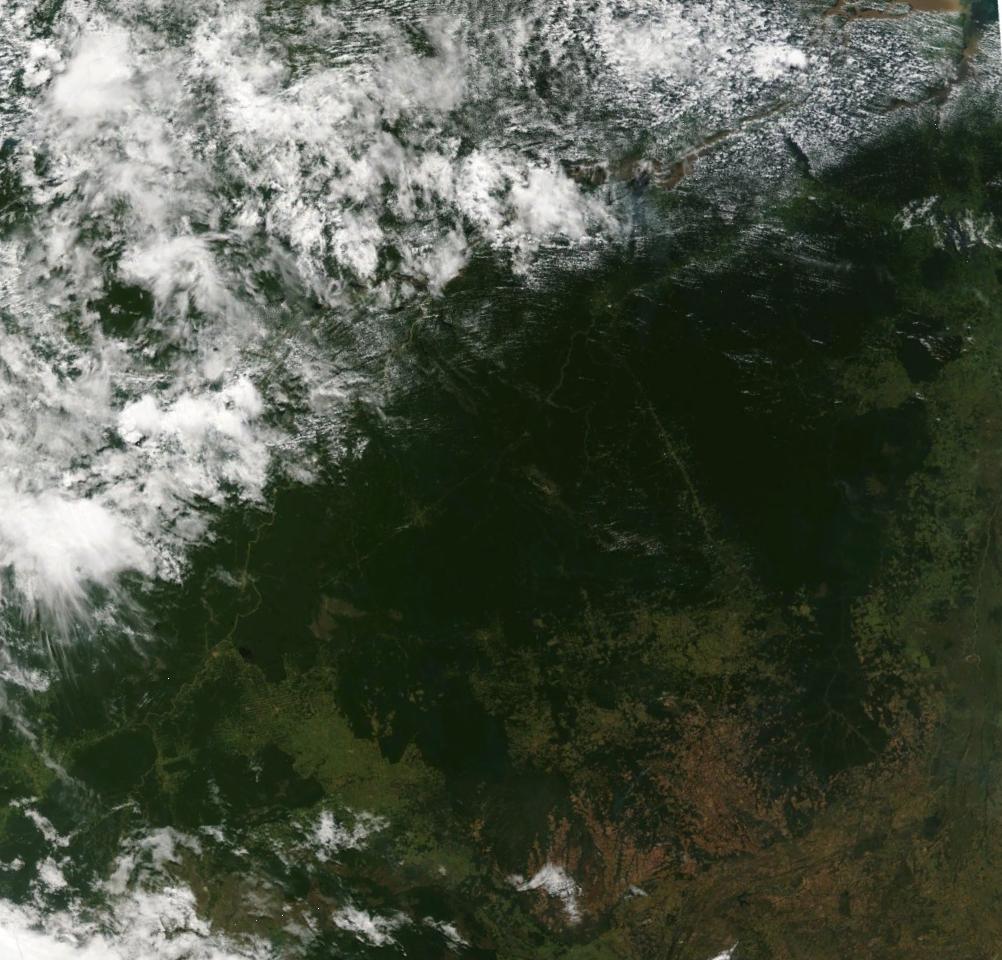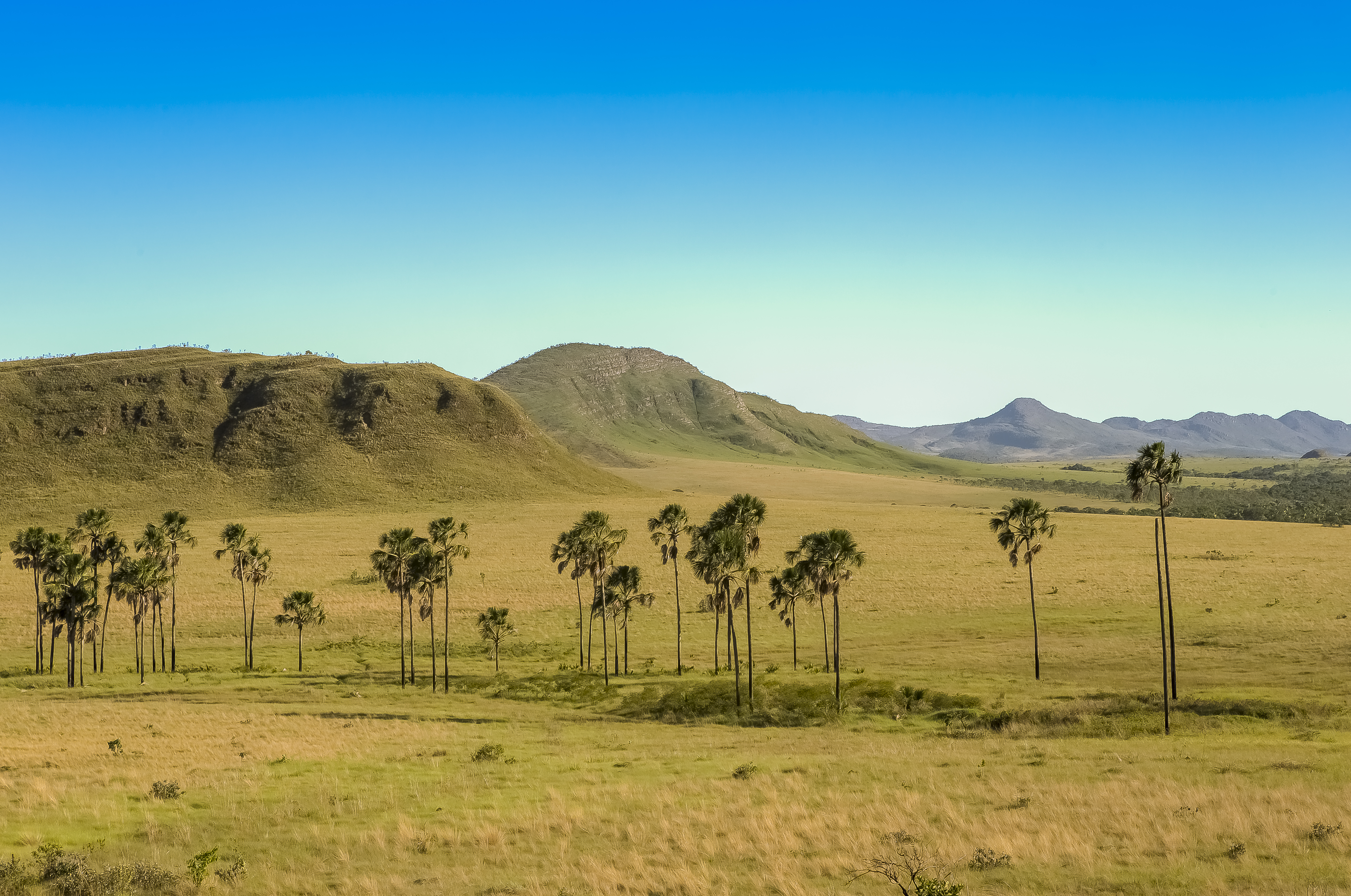|
Pseudobrickellia
''Pseudobrickellia'' is a genus of Brazilian plants in the tribe Eupatorieae within the family Asteraceae.D.J.N.Hind & H.E.Robinson. 2007. Tribe Eupatorieae In: ''The Families and Genera of Vascular Plants'' vol.VIII. (Joachim W.Kadereit & Charles Jeffrey, volume editors. Klaus Kubitzky, general editor). Springer-Verlag. Berlin, Heidelberg. ; Species * '' Pseudobrickellia angustissima'' (Spreng. ex Baker) R.M.King & H.Rob. - Bahia, Piauí, Minas Gerais, D.F., Goiás * '' Pseudobrickellia brasiliensis'' (Spreng.) R.M.King & H.Rob. - Amazonas, Rondônia, Tocantins, Bahia, Ceará, Piauí, Minas Gerais, D.F., São Paulo, Goiás, Mato Grosso, Mato Grosso do Sul Mato Grosso do Sul () is one of the Midwestern states of Brazil. Neighboring Brazilian states are (from north clockwise) Mato Grosso, Goiás, Minas Gerais, São Paulo and Paraná. It also borders the countries of Paraguay, to the southwest, and ... * '' Pseudobrickellia irwinii'' R.M.King & H.Rob. - Minas Ge ... [...More Info...] [...Related Items...] OR: [Wikipedia] [Google] [Baidu] |
Eupatorieae
Eupatorieae is a tribe of over 2000D.J.N.Hind & H.E.Robinson. 2007. Tribe Eupatorieae In: ''The Families and Genera of Vascular Plants'' vol.VIII. (Joachim W.Kadereit & Charles Jeffrey, volume editors. Klaus Kubitzky, general editor). Springer-Verlag. Berlin, Heidelberg. species of plants in the family Asteraceae. Most of the species are native to tropical, subtropical, and warm temperate areas of the Americas, but some are found elsewhere.Turner,B.L.(1997). Eupatorieae. In: Turner,Billie Lee (editor) ''The Compositae of Mexico. A systematic account of the family Asteraceae,'' vol.1. Phytologia Memoirs 11:i-iv,1-272. Well-known members are '' Stevia rebaudiana'' (used as a sugar substitute), a number of medicinal plants ('' Eupatorium''), and a variety of late summer to autumn blooming garden flowers, including '' Ageratum'' (flossflower), '' Conoclinium'' (mistflower), and '' Liatris'' (blazing star or gayfeather). Plants in this tribe have only disc florets (no ray florets ... [...More Info...] [...Related Items...] OR: [Wikipedia] [Google] [Baidu] |
Rondônia
Rondônia () is one of the 26 states of Brazil, located in the northern subdivision of the country (central-western part). To the west is a short border with the state of Acre, to the north is the state of Amazonas, in the east is Mato Grosso, and in the south and southwest is Bolivia. Rondônia has a population of 1,815,000 as of 2021. It is the fifth least populated state. Its capital and largest city is Porto Velho. The state was named after Cândido Rondon, who explored the north of the country during the 1910s. The state, which is home to 0.8% of the Brazilian population, is responsible for 0.6% of the Brazilian GDP. Geography Rondonia was originally home to over 200,000 km2 of rainforest, but has become one of the most deforested places in the Amazon. By 2003 around 70,000 km2 of rainforest had been cleared. The area around the Guaporé River is part of the Beni savanna ecoregion. The Samuel Dam is located in the state, on the Jamari River. History ... [...More Info...] [...Related Items...] OR: [Wikipedia] [Google] [Baidu] |
Endemic Flora Of Brazil
Endemism is the state of a species being found in a single defined geographic location, such as an island, state, nation, country or other defined zone; organisms that are indigenous to a place are not endemic to it if they are also found elsewhere. For example, the Cape sugarbird is found exclusively in southwestern South Africa and is therefore said to be ''endemic'' to that particular part of the world. An endemic species can be also be referred to as an ''endemism'' or in scientific literature as an ''endemite''. For example ''Cytisus aeolicus'' is an endemite of the Italian flora. ''Adzharia renschi'' was once believed to be an endemite of the Caucasus, but it was later discovered to be a non-indigenous species from South America belonging to a different genus. The extreme opposite of an endemic species is one with a cosmopolitan distribution, having a global or widespread range. A rare alternative term for a species that is endemic is "precinctive", which applies to s ... [...More Info...] [...Related Items...] OR: [Wikipedia] [Google] [Baidu] |
Mato Grosso Do Sul
Mato Grosso do Sul () is one of the Midwestern states of Brazil. Neighboring Brazilian states are (from north clockwise) Mato Grosso, Goiás, Minas Gerais, São Paulo and Paraná. It also borders the countries of Paraguay, to the southwest, and Bolivia, to the west. The economy of the state is largely based on agriculture and cattle-raising. Crossed in the south by the Tropic of Capricorn, Mato Grosso do Sul generally has a warm, sometimes hot, and humid climate, and is crossed by numerous tributaries of the Paraná River. The state has 1.3% of the Brazilian population and is responsible for 1.5% of the Brazilian GDP. The state is also known for its natural environment, and is a destination for domestic and international tourism. The Pantanal lowlands cover 12 municipalities and presents a variety of flora and fauna, with forests, natural sand banks, savannahs, open pasture, fields and bushes. The city Bonito, in the mountain of Bodoquena, has prehistoric caves, natural r ... [...More Info...] [...Related Items...] OR: [Wikipedia] [Google] [Baidu] |
Mato Grosso
Mato Grosso ( – lit. "Thick Bush") is one of the states of Brazil, the third largest by area, located in the Central-West region. The state has 1.66% of the Brazilian population and is responsible for 1.9% of the Brazilian GDP. Neighboring states (from west clockwise) are: Rondônia, Amazonas, Pará, Tocantins, Goiás and Mato Grosso do Sul. The state is roughly 82.2% of the size of its southwest neighbor, the nation of Bolivia. A state with a flat landscape that alternates between vast '' chapadas'' and plain areas, Mato Grosso contains three main ecosystems: the Cerrado, the Pantanal and the Amazon rainforest. The Chapada dos Guimarães National Park, with caves, grottoes, tracks, and waterfalls, is one of its tourist attractions. The extreme northwest of the state has a small part of the Amazonian forest. The Xingu Indigenous Park and the Araguaia River are in Mato Grosso. Farther south, the Pantanal, the world's largest wetland, is the habitat for nearly one ... [...More Info...] [...Related Items...] OR: [Wikipedia] [Google] [Baidu] |
São Paulo (state)
São Paulo () is one of the Federative units of Brazil, 26 states of the Brazil, Federative Republic of Brazil and is named after Paul of Tarsus, Saint Paul of Tarsus. A major industrial complex, the state has 21.9% of the Brazilian population and is responsible for 33.9% of Brazil's GDP. São Paulo also has the List of Brazilian federative units by Human Development Index, second-highest Human Development Index (HDI) and GDP per capita, the List of Brazilian states by infant mortality, fourth-lowest infant mortality rate, the List of Brazilian states by life expectancy, third-highest life expectancy, and the List of Brazilian states by literacy rate, third-lowest rate of illiteracy among the federative units of Brazil. São Paulo alone is wealthier than Argentina, Uruguay, Paraguay, and Bolivia combined. São Paulo is also the world's twenty-eighth-most populous Administrative division, sub-national entity and the most populous sub-national entity in the Americas. With more than 4 ... [...More Info...] [...Related Items...] OR: [Wikipedia] [Google] [Baidu] |
Ceará
Ceará (, pronounced locally as or ) is one of the 26 states of Brazil, located in the northeastern part of the country, on the Atlantic coast. It is the eighth-largest Brazilian State by population and the 17th by area. It is also one of the main tourist destinations in Brazil. The state capital is the city of Fortaleza, the country's fourth most populous city. The state has 4.3% of the Brazilian population and produces 2.1% of the Brazilian GDP. Literally, the name ''Ceará'' means "sings the jandaia". According to José de Alencar, one of the most important writers of Brazil and an authority in Tupi Guaraní, ''Ceará'' means turquoise or green waters. The state is best known for its extensive coastline, with of sand. There are also mountains and valleys producing tropical fruits. To the south, on the border of Paraíba, Pernambuco and Piauí, is the National Forest of Araripe. Geography Ceará has an area of . It is bounded on the north by the Atlantic Ocean ... [...More Info...] [...Related Items...] OR: [Wikipedia] [Google] [Baidu] |
Tocantins
Tocantins () is one of the 26 states of Brazil. It is the newest state, formed in 1988 and encompassing what had formerly been the northern two-fifths of the state of Goiás. Tocantins covers and had an estimated population of 1,496,880 in 2014. Construction of its capital, Palmas, began in 1989; most of the other cities in the state date to the Portuguese colonial period. With the exception of Araguaína, there are few other cities with a significant population in the state. The government has invested in a new capital, a major hydropower dam, railroads and related infrastructure to develop this primarily agricultural area. The state has 0.75% of the Brazilian population and is responsible for 0.5% of the Brazilian GDP. Tocantins has attracted hundreds of thousands of new residents, primarily to Palmas. It is building on its hydropower resources. The Araguaia and Tocantins rivers drain the largest watershed that lies entirely inside Brazilian territory. The Rio Tocanti ... [...More Info...] [...Related Items...] OR: [Wikipedia] [Google] [Baidu] |
Goiás
Goiás () is a Brazilian state located in the Center-West region. Goiás borders the Federal District and the states of (from north clockwise) Tocantins, Bahia, Minas Gerais, Mato Grosso do Sul and Mato Grosso. The state capital is Goiânia. With 7.2 million inhabitants, Goiás is the most populous state in the Center-West and the 11th most populous in the country. It has the ninth largest economy among Brazilian federative units. In Brazil's geoeconomic division, Goiás belongs to the Centro-Sul (Center-South), being the northernmost state of the southern portion of Brazil. The state has 3.3% of the Brazilian population and is responsible for 2.7% of the Brazilian GDP. The history of Goiás dates back to the beginning of the 18th century, with the arrival of pioneers from São Paulo. The Rio Vermelho region was the first to be occupied, where Vila Boa (later renamed Goiás) was founded. The development and settlement of the state took place, in a more intensified way, st ... [...More Info...] [...Related Items...] OR: [Wikipedia] [Google] [Baidu] |

.jpg)
.jpg)

